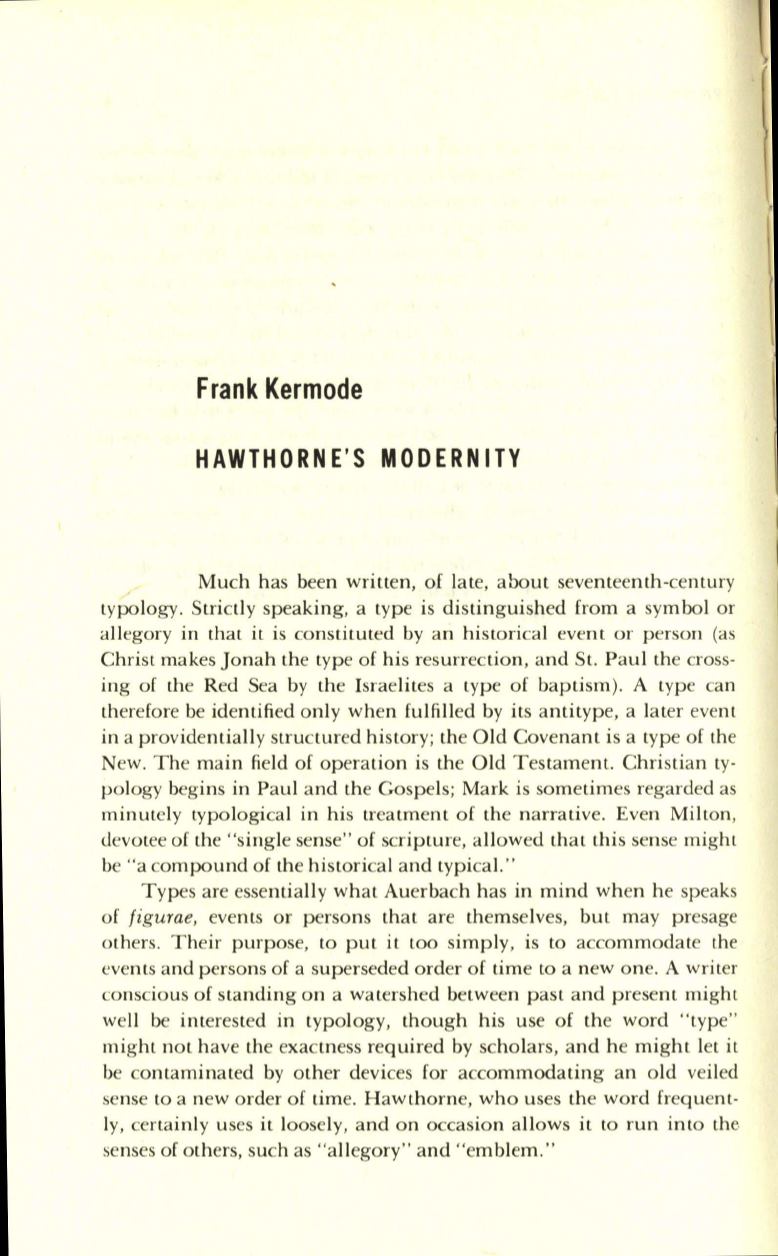
Frank Kermode
HAWTHORNE 'S MODERNITY
Much has been written, of late, about seventeenth-century
typology. Strictly speaking, a type is distinguished from a symbol or
allegory in that it is constituted by an historical event or person (as
Christ makes Jonah the type of his resurrection, and St. Paul the cross–
ing of the Red Sea by the Israelites a type of baptism). A type can
therefore be identified only when fulfilled by its antitype, a later event
in a providentially structured history; the Old Covenant is a type of the
New. The main field of operation is the Old Testament. Christian ty–
pology begins in Paul and the Gospels; Mark is sometimes regarded as
minutely typological in his treatment of the narrative. Even Milton,
devotee of the "single sense" of scripture, allowed that this sense might
be "a compound of the historical and typical."
Types are essentially what Auerbach has in mind when he speaks
of
figurae,
events or persons that are themselves, but may presage
others. Their purpose, to put it too simply, is to accommodate the
events and persons of a superseded order of time to a new one. A writer
conscious of standing on a watershed between past and present might
well
be
interested in typology, though his use of the word "type"
might not have the exactness required by scholars, and he might let it
be contaminated by other devices for accommodating an old veiled
sense to a new order of time. Hawthorne, who uses the word frequent–
ly, certainly uses it loosely, and on occasion allows it to run into the
senses of others, such as "allegory" and "emblem."


